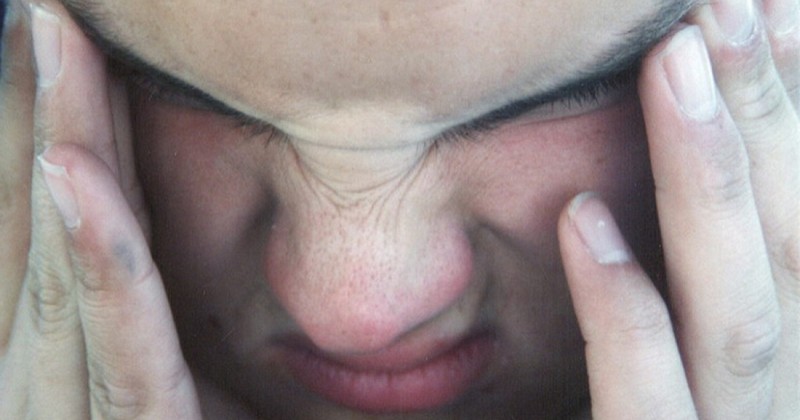Algo-phobia (fear of pain): symptoms, causes and treatment.

A summary of the characteristics of this specific type of phobia related to pain.
There are as many phobias as there are stimuli or things in the world. Thus, one can have a phobia of practically anything. In this article we will learn about a little known phobia, algophobia, or Pain phobia..
Specific phobias are a type of anxiety disorder that involve a disproportionate or irrational fear of certain stimuli, objects or situations, and that cause interference in the person's life. The somethingphobia is considered a specific phobia because the feared stimulus or situation can be concretized (pain).
What is lgofobia?
In the algofobia, the fear that appears is abnormal and persistent, and goes beyond the "normal" fear to suffer pain. of pain. This is a more common phobia in older people. It can be treated through behavioral treatments and also with anxiolytic medication, as we will see below.
Symptoms
Sthmophobia is characterized by phobic" fear of any kind of pain-related experience, not just "the pain itself".not just "pain itself". People with algophobia may develop a strong obsession with any situation, circumstance or stimulus that may produce sensations of pain. Thus, in algophobia the phobic element is pain as an experience and/or sensation.
What a person with algophobia fears, in reality, is the subjective perception of pain. This implies that there are no specific mechanisms to detect which stimuli (and which not) can be phobic for the person. In other words, it cannot be established which type of pain or sensation will be high enough for the person to respond with phobic fear to it.
On the other hand, it is also not essential for the person to be exposed to health situations that cause pain in order for algo-phobia to affect his or her daily routine. for algophobia to affect the person's daily routine.
Having algophobia can significantly affect the person's quality of life and interfere with his or her usual functioning or behavior. This is why it is important to detect its characteristics and design specific interventions to treat it.
Causes
The causes of algophobia are the same as the causes of specific phobias, although depending on the type of phobia, these may vary.
In the case of the somethingophobia, it may have arisen through classical conditioning (by associating the sensation of pain with some other negative stimulus, although in this case the pain itself is already aversive); it may also have appeared due to traumatic experiences (direct conditioning), if the person was subjected to uncontrollable or excessively intense situations of pain.
On the other hand, phobias are also "inherited", i.e., they can be acquired by observation (for example, if the person's mother has also manifested this phobia, and the person ends up acquiring it), or by vicarious conditioning or modeling processes (for example, if the person has seen another person suffering a lot from pain, and/or with a phobia of pain).
Finally, conditioning by transmission of information can also originate algo-phobia; in this case, third parties would contribute to the development of algo-phobia (i.e., third parties would explain situations of pain and symptoms of their illnesses to the person, who would end up developing the phobia).
Treatment
The psychological treatment of algophobia would be the same as for a specific phobia; thus, live exposure is the treatment par excellence (behavioral treatment), cognitive therapy (behavioral treatment), cognitive-behavioral therapy, with the aim of eliminating the cognitive distortions associated with the phobia, and finally we can also use exposure through virtual reality (in experimental phase).
At the pharmacological level, anxiolytics can be used (to reduce anxiety), although it is not advisable to use them in exposures in the case of behavioral treatment, since the therapeutic effect is reduced (the person does not face the situation in a "natural" way). However, they can be used as a complement to other psychological therapies.
Types of phobias
It is important to know that the DSM-IV characterizes and includes 3 types of phobias. These three types are: agoraphobia (fear of various situations), specific phobia (fear of a specific object or situation) and social phobia (fear of social situations or public performances).
Somethingophobia would be included as a type of specific phobia, since in this type of phobia, there is a fear of a stimulus or a specific situation. fear of a specific stimulus or situation, in this case pain (painin this case, pain (or the subjective experience of pain).
Bibliographical references:
- Gratacós, M. Algophobia: Symptoms, Causes and Treatments. Lifeder
- Belloch, A.; Sandín, B. and Ramos, F. (2010). Manual of Psychopathology. Volume II. Madrid: McGraw-Hill
- APA (2014). DSM-5. Diagnostic and statistical manual of mental disorders. Madrid. Panamericana.
- Aguilar, B. (2016). Pain and suffering in medicine. Rev Urug Car diol, 31, 10-14.
(Updated at Apr 12 / 2024)